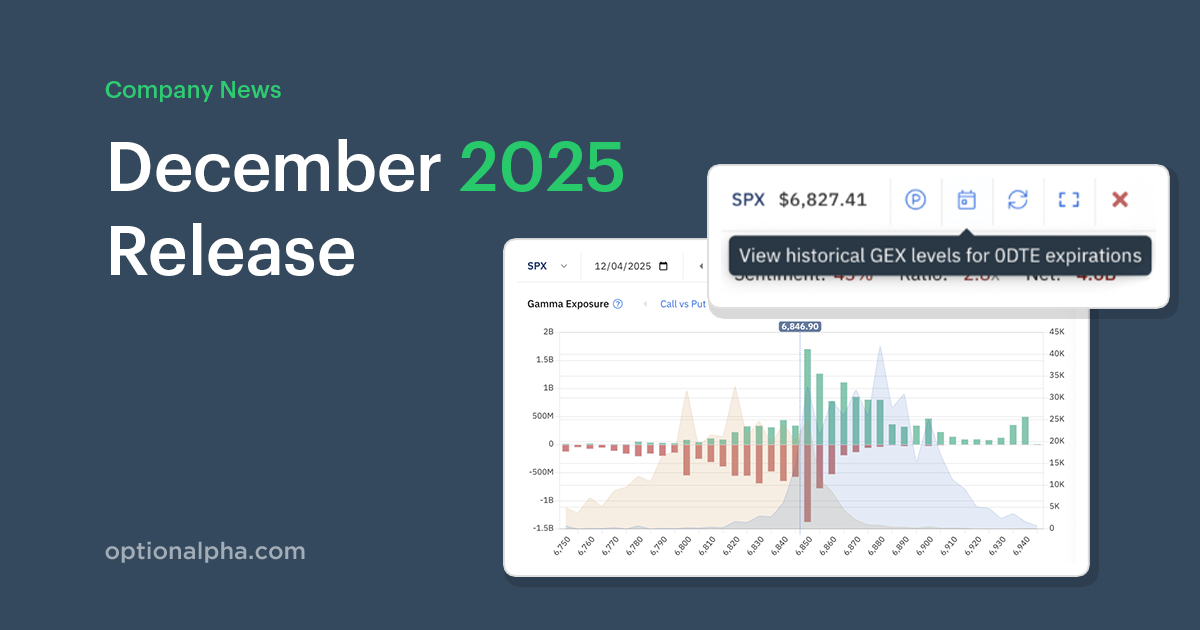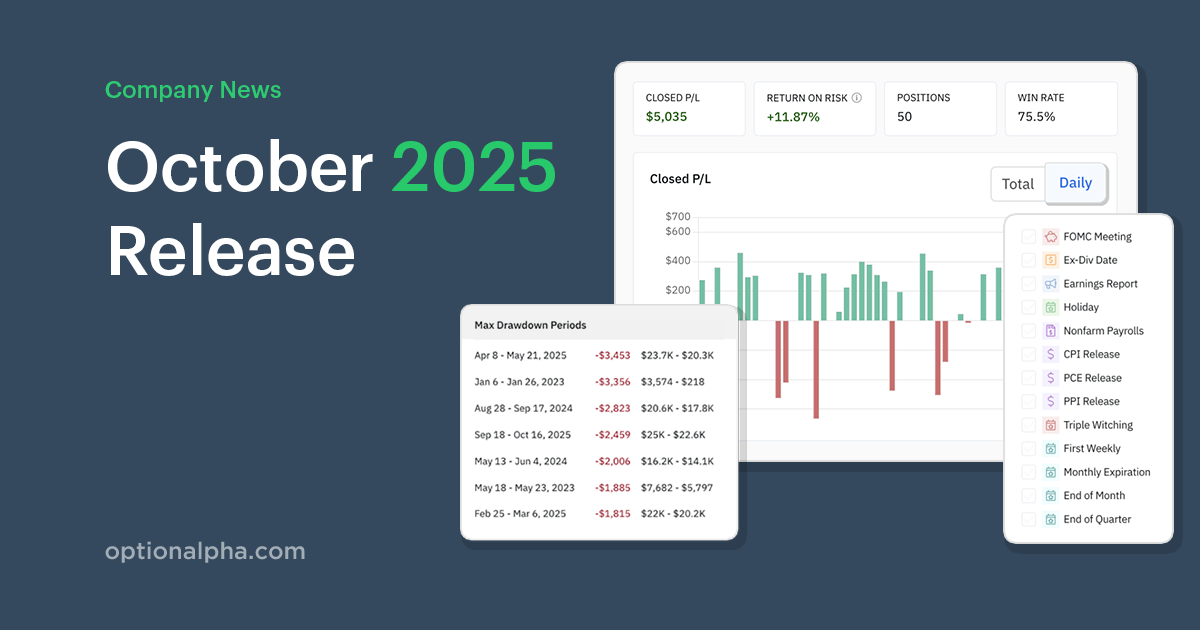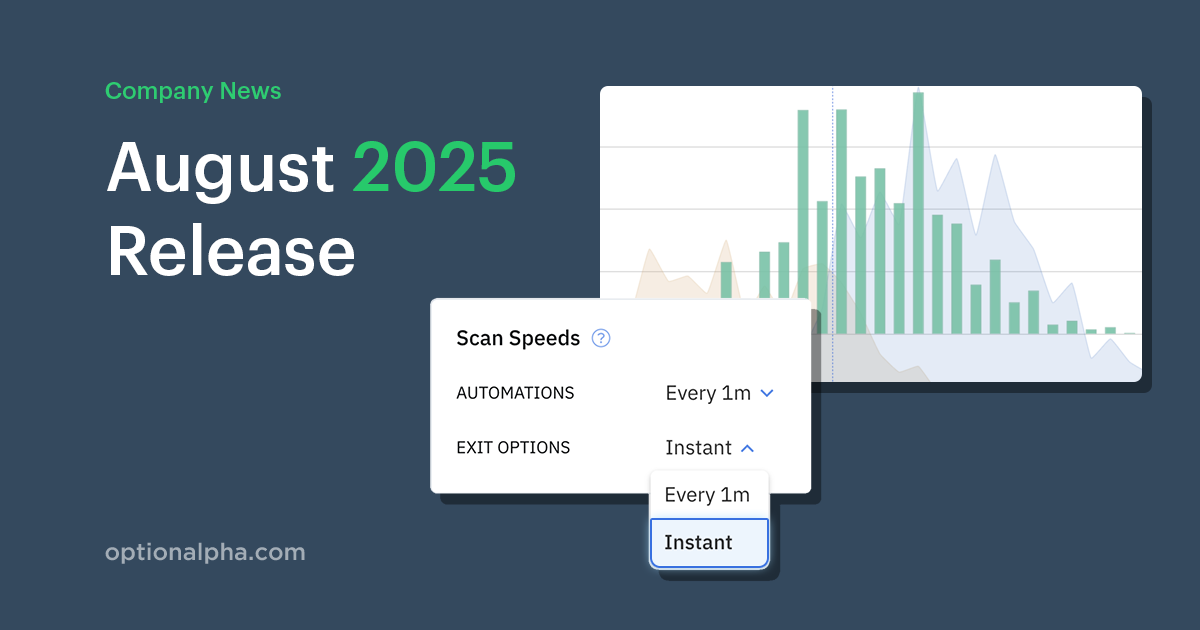Our automated trading platform creates a new world of flexibility and opportunity for traders. The platform is loaded with exciting features and SmartStops is one of the favorites!
What is a SmartStop?
SmartStops are not your traditional trailing stop. SmartStops begin trailing a position after a target is reached.
What does that mean?
SmartStops activate once a specific profit target for a position is hit and then trail the position with an exit order.
For example, you can set a 50% profit target on a put credit spread with a 10% trailing stop. Once the position reaches a 50% profit, the SmartStop initiates and trails the position by 10%. Therefore, the SmartStop begins trailing at 40%, which is 10% below the position’s profit target.

This is a game-changer because traditional trailing stops begin as soon as you enter the order.
Before SmartStops, if you entered a new position with a traditional 10% trailing stop, the position is trailed immediately. Initial price fluctuations of the underlying ticker can knock you out of a position before it has time to work.

Traditional trailing stops and limit orders can hinder your profit potential.
If you have a 50% profit target and enter a GTC order (manually!), the profit is capped at the order price. Not anymore.
Here are some examples of how you can leverage the power of SmartStops in your automations.
Use SmartStops to Get More from Your High Probability Trades
High probability put credit spreads are a popular options selling strategy. The strategy looks to take advantage of theta decay and decreased volatility during the trade’s duration.
High probability trades such as this are often closed early to skew the likelihood of success in the options seller’s direction. But, these trades often leave quite a bit of credit on the table with the early exit.
Now you can choose to get more from your trades. You can add a 1-minute exit option trailing SmartStop to trigger at your strategy’s normal price target.
If you typically exit a put credit spread at 50% of the initial premium, you could trail the 50% profit target by 10%. This allows you to take advantage of further time decay or decreased volatility after the position reaches its initial price target.

If the position reaches the price target, a 10% trailing stop automatically triggers and will close the position if it pulls back 10%, giving you the opportunity for a higher profit potential.
You can even add additional closing criteria for increased automation flexibility in a monitor automation, and even update Exit Options dynamically.
Grouping SmartStops with other Decision Recipes
Traders typically have a price level where they are right on a trade (profit target) and a price level where they are wrong (stop loss). Can you automate both? You bet.
You can combine SmartStops with the Evaluating Position Performance decision recipe to automate the trailing profit target and stop loss.
And/or decision criteria make bots dynamic and give you complete control over an automation’s functionality.
In one bot decision block, you can check if the position trails a 50% target by 10% or if the position premium has increased by 100% since it was opened.

Now you don’t have to worry about closing a position if your profit target or stop triggers. The bots will do it all for you.
Again, you can set any target, trailing percentage, or position performance criteria you want!
Use Multiple SmartStops Depending on Days to Expiration
Traders tend to handle positions differently as expiration approaches. Maybe you lower your profit target if expiration is only a few days away. You can use multiple SmartStops depending on the days to expiration.
In the Automation Editor, you can add another SmartStop with a lower profit target if the days until expiration is less than a certain value.
For example, you may typically exit short put spreads at a 50% target (and trail it with a SmartStop, of course!). But, if expiration is less than 30 days away, you may want to lower your profit target to 25%.

You can add as many SmartStops as you like based on a number of criteria such as days until expiration, the probability the position will expire in-the-money, and more.
Using the Comparing Position Duration decision recipe, you could use similar logic to exit a position after it has been opened a certain number of days. The possibilities are endless!
Bonus! Combine SmartStops with Profit Target Recipes for Increased Flexibility
Sometimes you put on a trade, and everything just goes right. The position exceeds your typical profit target, and you want to close the position. Can you automate that scenario? I’m glad you asked!
You could group a SmartStop and an Evaluating Position Performance decision to set an absolute profit target.

For example, the bot can check if the short put spread trails a 50% target by 10% or if the position’s premium has decreased by 65% since it was opened.

You could combine a SmartStop, an absolute profit target, a stop loss, an expiration filter, and so much more.
The best part? Once you’ve set up your automation, you don’t have to watch the position’s progress. The monitor automation has you covered.
“SmartStops are a game-changer.” Monitor automations enable you to offload position management onto a bot. SmartStops take it a step further and optimize your exits with flexibility and give you an opportunity to generate better returns.
Be sure to check out the Option Alpha podcast to learn more about SmartStops: How to Intelligently Use SmartStops




.png)









